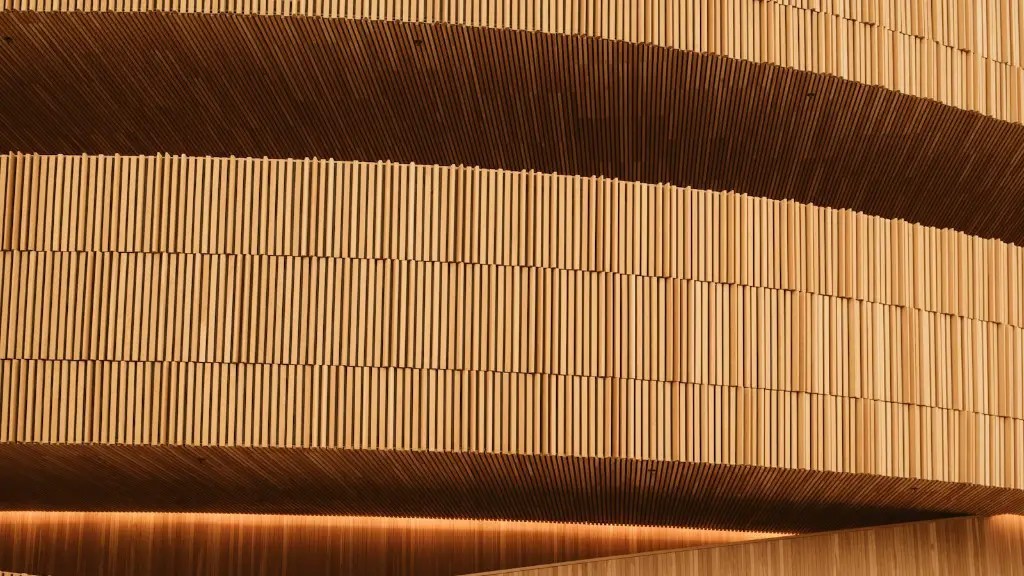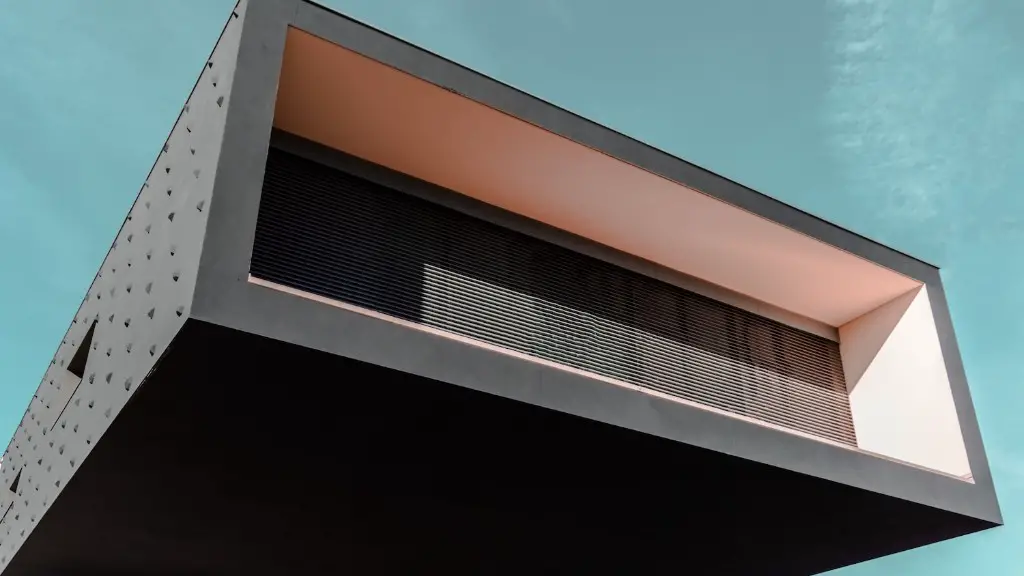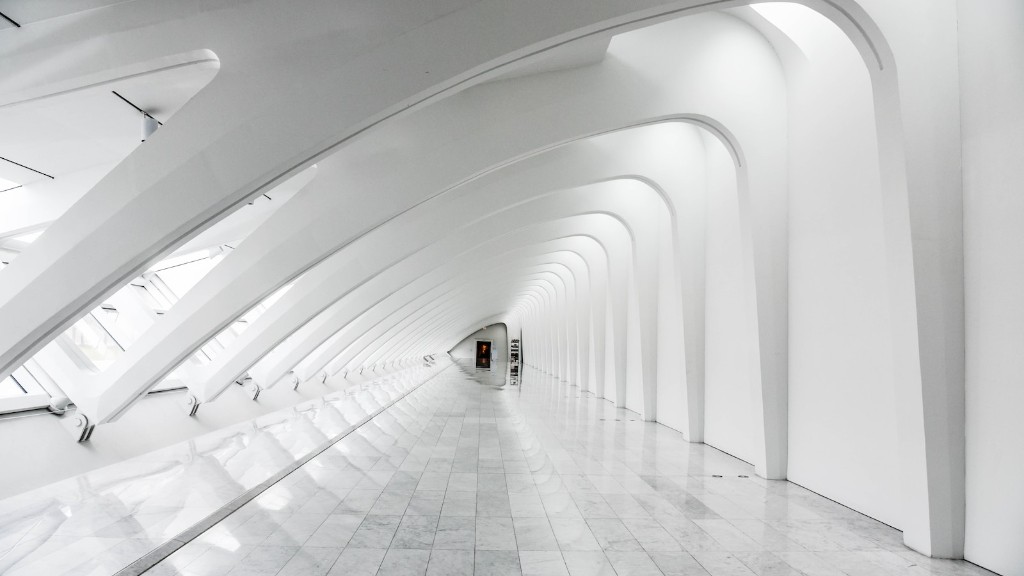Architecture and Culture
Architecture is something that pervades our societies and cultures. Not only does it shape the way people view a particular place and its history, but it also defines what a community is and how its inhabitants interact with their environment. The importance of architecture is often overlooked, yet it plays an essential role in defining a culture’s customs, beliefs, and values. It provides individuals with a sense of identity and belonging not found anywhere else.
The structures of any given society are shaped by the elements of architecture that design its borders and spaces. From Chinese pagodas to British Gothic cathedrals, these structures express the identity of the people living within them. Palaces, temples, and the homes of ancient cities were built with specific purposes in mind and they embodied the culture and customs of its inhabitants. Through architecture, we get a view of how cultures past and present have adapted to their environment.
Additionally, architecture has an important social function. It establishes a sense of community by setting boundaries for a given area, as well as by providing a sense of security. This serves to safeguard individuals from both physical and mental danger, making them feel safe and confident in their surroundings. Furthermore, it can provide a sense of continuity over time, serving as a place of comfort to the current generations.
Finally, architecture has an aesthetic purpose. It is the artistic representation of a culture and the way that it views its environment. This is evident in the way that cultures have used architecture to display their customs and beliefs over the centuries. For example, in Europe, churches are often built with ornate façades meant to depict the connection between the divine and the human. Similarly, in certain parts of the world, mosques are built with intricate domes and minarets meant to evoke a feeling of awe and reverence.
Effect Of Architecture On Society
The effect of architecture on society cannot be underestimated. It can create both a physical and a psychological impact on the people living in it. Studies suggest that architecture can influence the way people interact with each other, and it can also shape how individuals perceive their environment. Additionally, architecture can provide a sense of safety and comfort to its inhabitants, as well as foster feelings of community and unity.
It is also believed that architecture can be used as an instrument of control, with some structures being designed to produce feelings of contentment and security, while others may be used to instill feelings of anxiety and powerlessness in its inhabitants. Additionally, architecture has been found to have a significant effect on the way people view their environment, with the design of the structure being just as important as the materials it is built from.
The impact that architecture has on people is often especially evident in more deprived areas. For example, in some instances, poorly-designed housing and living areas can lead to an increase in crime and violence, as people are deprived of both privacy and safety. Similarly, in crowded cities, a lack of efficient transportation systems can lead to increased levels of stress, frustration and anger, which are all factors that can have an overall detrimental effect on the quality of life of its inhabitants.
Modern Architecture
Modern architecture has had an immense impact on the way societies perceive their environment, with the rise of the Bauhaus being one of the most influential movements of the 20th century. This style of architecture, which combines both utilitarian and artistic elements, has had a major effect on the way urban areas are designed, as well as how people interact with them. Newer cities are often designed with an emphasis on efficiency, with many businesses being clustered together in close proximity in order to make it easier for people to get around and take advantage of the services offered.
Modern architecture has also had a major influence on green building. This movement strives to reduce the environmental impact of buildings by utilizing materials and methods that are sustainable and energy-efficient, as well as by ensuring that all buildings are designed in a manner that respects the community and its occupants.
Overall, it is evident that architecture is a powerful tool in defining a culture and society. From its aesthetic and social functions, to its effects on the environment, it is clear that architecture is essential for the development of a cohesive and healthy community.
Sustainability and Architecture
Sustainability is an increasingly important factor in modern architecture and urban planning. Architects, planners, and developers must ensure that any structures they create are built in an ecologically responsible manner that takes into account the long-term effects of the structure on its environment, as well as its inhabitants.
A sustainable approach to architecture means that materials and methods that minimize environmental impact must be implemented. This includes utilizing materials such as recycled plastics, as well as utilizing renewable energy sources such as solar and wind power. Additionally, architects must strive to reduce the amount of waste produced by the building and must ensure that any waste material is disposed of responsibly.
Furthermore, sustainable architecture must take into account the environmental impact of transportation. This means that designers should strive to create buildings and neighborhoods that are walkable and bikeable, thus reducing the need for cars and other forms of transportation that have a large carbon footprint. Additionally, planners should ensure that these communities are designed in an efficient manner, utilizing green spaces and utilizing public transport wherever possible.
Overall, it is clear that sustainability is essential for any modern architecture project. Not only does it ensure that the environment is protected, but it also helps to create healthy, livable spaces for its inhabitants.
Sociological Effects of Architecture
The effect of architecture on society has been the subject of much debate. It is often argued that the design of the buildings, streets and public spaces which individuals interact with can influence the way they act and interact with each other. It can also shape people’s behavior and the way they view their environment. For example, studies have found that buildings with high ceilings tend to evoke feelings of power and grandeur, whereas buildings with low ceilings can give a sense of confinement and insecurity. Similarly, wide streets can evoke feelings of freedom, whereas narrow streets can lead to feelings of unease and discomfort.
Additionally, it is believed that architecture can influence the way people form relationships. Studies have found that there is a connection between architecture and the way individuals approach social interaction. In certain instances, poorly-designed buildings and public spaces can lead to social alienation and can make it difficult for people to form meaningful relationships with each other. Conversely, buildings that take into account the psychological effects of its design can foster a sense of community and can help to create meaningful connections between individuals.
Overall, it is clear that architecture has an important effect on individuals and the way they interact with their environment. It can shape not only the physical layout of a city, but also its culture, customs and beliefs. Through architecture, we can gain a better understanding of what it means to be a member of a society and how architecture can define and shape a culture.
Impact Of Technology On Architecture
The emergence of technology has had a profound impact on modern architecture. Technologies such as 3D printing, robotics, and virtual reality have changed the way buildings are designed, constructed and experienced. By utilizing these modern technologies, architects have been able to create designs that were previously impossible.
3D printing, in particular, has had a major effect on modern architecture. This technology has allowed architects to explore more complex and intricate designs. Additionally, it has made it possible to create large scale structures that would otherwise be impossible to construct due to financial and logistical constraints.
Robotics has also had an impact on architecture, as robotic arms and unmanned aerial vehicles can now be used to construct and test structures more efficiently and accurately than ever before. Virtual reality and augmented reality technologies have increased the level of interaction between users and structures. This has allowed architects to not only create designs that are aesthetically pleasing, but also designs that are tailored specifically to the needs of the user.
Overall, it is clear that technology has had a major effect on architecture. By utilizing these new technologies, architects are now able to create more efficient and intricate designs that can be tailored specifically to the needs of the user.
Safety and Architecture
Safety is an increasingly important factor in architecture and urban design. Designers must take into consideration the safety of its inhabitants when designing buildings and neighborhoods. This includes utilizing materials that are fire and earthquake resistant, as well as paying attention to ventilation, lighting, and acoustics.
Architects must also take into account the way the building and neighborhood interact with the environment. This means paying attention to drainage systems, and ensuring that the building does not have a negative impact on its surroundings. In some cases, this means utilizing green roofs and green walls, which can both reduce energy usage and improve air quality.
Additionally, architects must ensure that public spaces are designed with safety in mind. This means ensuring that streets are well-lit and that security systems are in place to prevent crime and vandalism. Additionally, designers must take into consideration the potential risks associated with any structure and must strive to create designs that are as safe as possible.
Overall, it is clear that safety is an important factor in modern architecture. Designers must take into consideration the potential risks associated with their designs and must strive to create buildings that are as safe as possible for its inhabitants.
Global Impact of Architecture
The impact of architecture is increasingly being felt on a global scale. Through the use of modern technology, buildings can be designed and constructed in a way that is both ecologically and economically sustainable. Additionally, modern architecture has demonstrated its ability to bridge the gap between cultures and create places that are both aesthetically pleasing and culturally relevant.
Architecture has also been essential for providing aid to communities in need. A good example of this is the development of low-cost shelters, which have been utilized in many parts of the world for refugees and survivors of natural disasters. By utilizing sustainable materials and methods, architects have been able to create buildings that are both cost-efficient and durable.
Furthermore, architecture has been an essential tool in helping to bridge the gap between developed and developing countries. By creating affordable, sustainable buildings, designers have been able to help improve the quality of life for many people in need. Additionally, by utilizing green materials and methods, architects have provided individuals with a sense of security and comfort, allowing them to thrive in their environments.
Overall, it is clear that architecture has a major impact on both a local and global scale. By utilizing sustainable methods and materials, architects are able to create structures that are both cost-efficient and culturally relevant, providing individuals with a sense of security and comfort.





